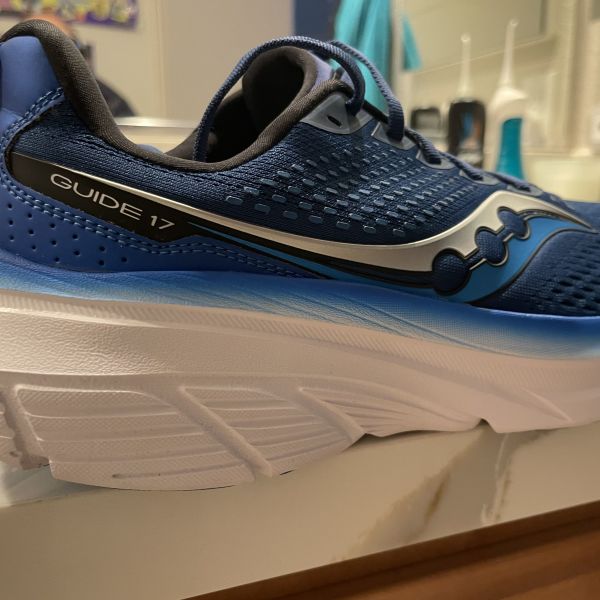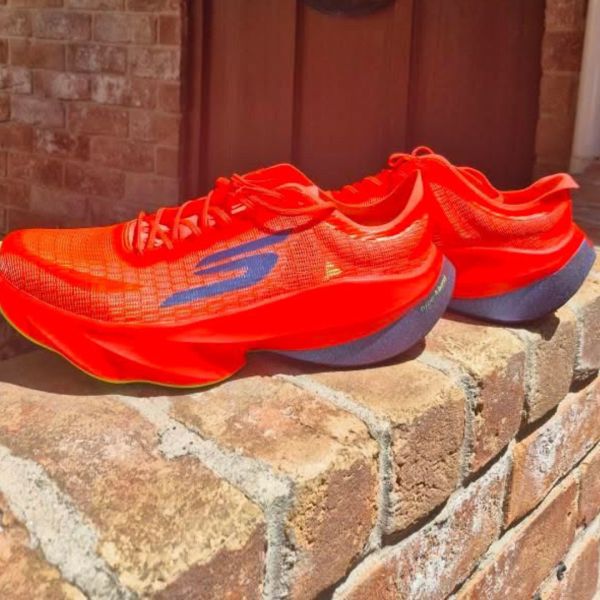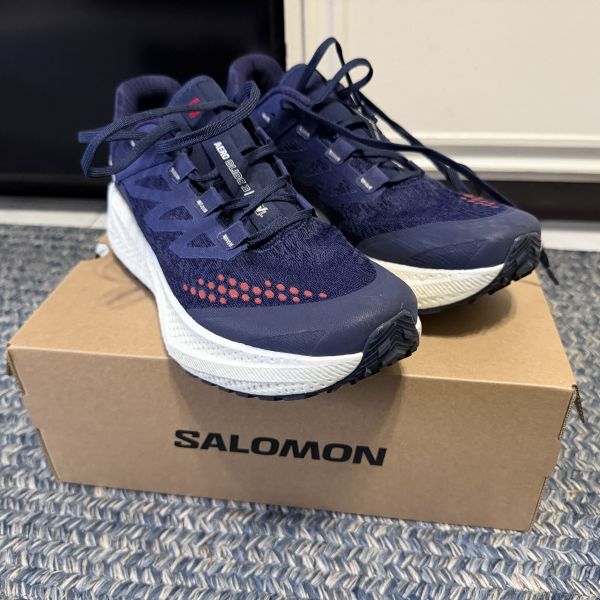
I was eager to put the Saucony Guide 17 to the test. Known for its lightweight yet supportive design, this shoe has become a go-to for runners seeking extra stability without the bulk. When I worked the floor of run specality, it was one of my favorite stability shoes.
While stability shoes aren’t my usual choice for my own running, I’ve found they can be great option for my gait on recovery days when my body craves added support. Now in its 17th iteration, the Saucony Guide continues to set the standard for versatile, stable trainers.
Read my honest review of Saucony Guide 17 and see what it offers runners.
Saucony Guide 17 Quick Facts
The moment I saw the color options, I was sold. How fun is this bright orange pair? Saucony has stepped up its game with vibrant designs that bring some excitement to stability shoes. I know bright colors are not everyone's thing, but I appreciate a bold shoe. Yes, they have more subdued options if that is your thing. The upper is made of breathable mesh that strikes the perfect balance between flexibility and support. It feels light on the foot yet still provides a secure fit.
The heel collar is well-padded, giving a snug and comfortable feel, while the gusseted tongue stays put and doesn’t shift during runs. The sidewalls are contoured to wrap around your foot, ensuring everything stays in place, whether you’re out for a quick jog or a long-distance run. A good running shoe should feel invisible, and for me, the Guide 17 mostly achieves that.
I typically wear between a women’s size 10-11 wide, and the size 11 fits well.
The midsole of the Saucony Guide 17 is where it really stands out. This model introduces Center Path Technology, which enhances stability by guiding your foot straight down the centerline. It’s a noticeable improvement from past versions, which had drifted away from the traditional stability the Guide was known for. Previous versions became less stable and some years it was hard to differentiate between the Ride and the Guide.
The midsole features PWRRUN cushioning with an additional 2 mm in the forefoot, offering softer landings and smoother transitions. The rocker-like design encourages a forward motion, making long runs feel less taxing.
My first run in the Guide 17 was a pleasant surprise. The added forefoot cushioning provided a premium feel, perfect for longer efforts and steady daily mileage. I like that it feels a lot softer. While it’s not my choice for speedwork, it’s an excellent option for easy runs and recovery days.
If you've never run in the Guide, you'll appreciate the softness and stability of this version. If you've used the Guide before, you'll appreciate there is more stability again.
The outsole of the Guide 17 delivers dependable traction on various surfaces, including wet roads and light trails. I’ve put over 100 miles on them so far, and while the grip remains solid, the durability is slightly underwhelming. The outsole lacks substantial rubber coverage, leading to noticeable wear in high-impact areas. I estimate these shoes will last about 200-300 miles, which is lower than average for a daily trainer.
Although because of the lack of rubber, I wouldn’t use them for dedicated trail running, they handle occasional off-road ventures without issue. The traction holds up well in less-than-ideal weather but you might find yourself sliding around a bit more without the rubber. Seriously, why are brands not including this rubber at the bottom?
The Saucony Guide 17 strikes a great balance between comfort and stability, making it an excellent choice for daily training, long runs, and even ultra-distance events. It’s clear Saucony has updated it back to appeal to runners who value a stable ride without compromising on comfort.
Who Should Buy the Saucony Guide 17?
Who Should Skip the Saucony Guide 17?
I was paid to write an honest shoe review of my choice.
Login to your account to leave a comment.






We Want to Give it to You!
